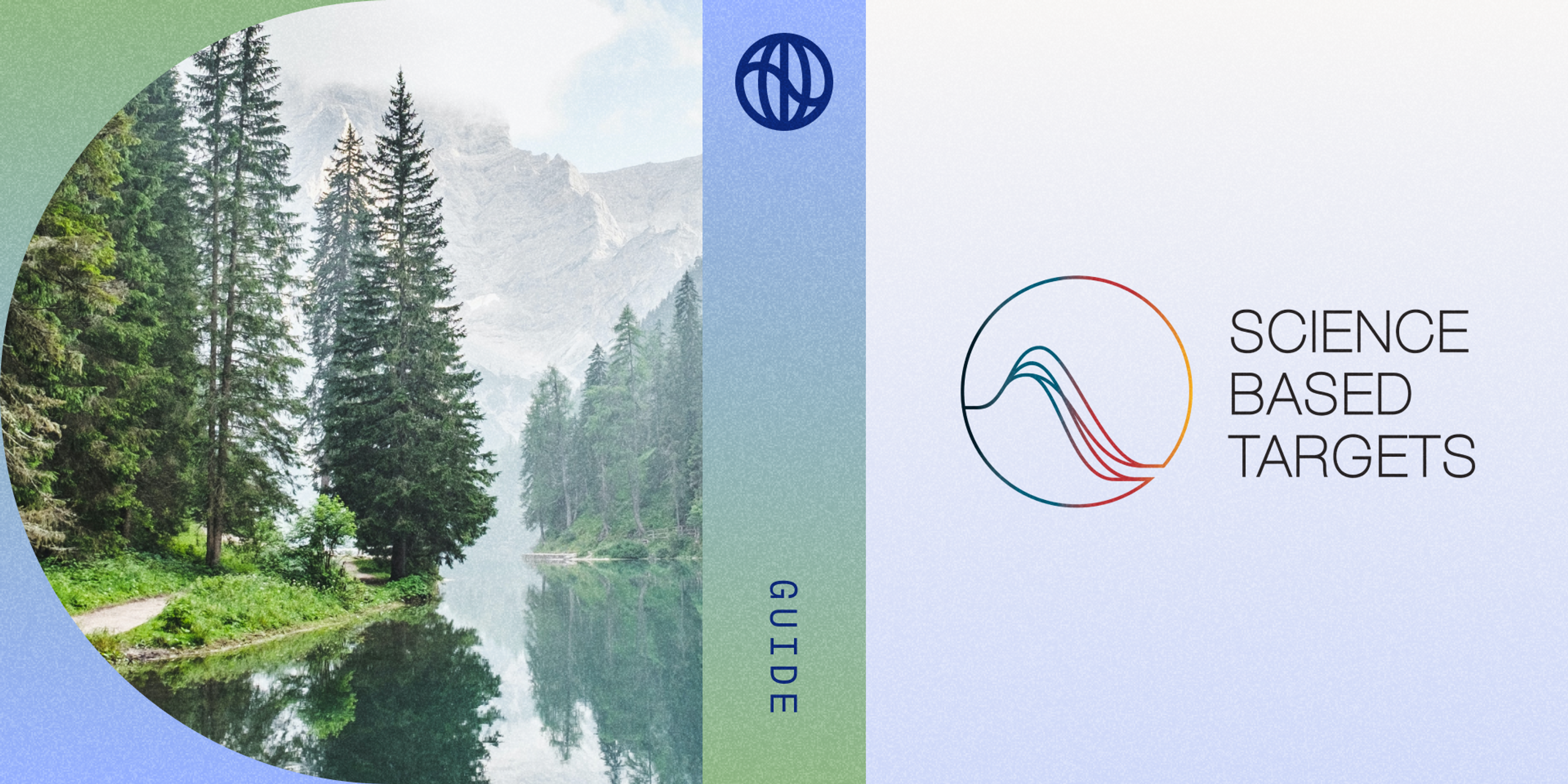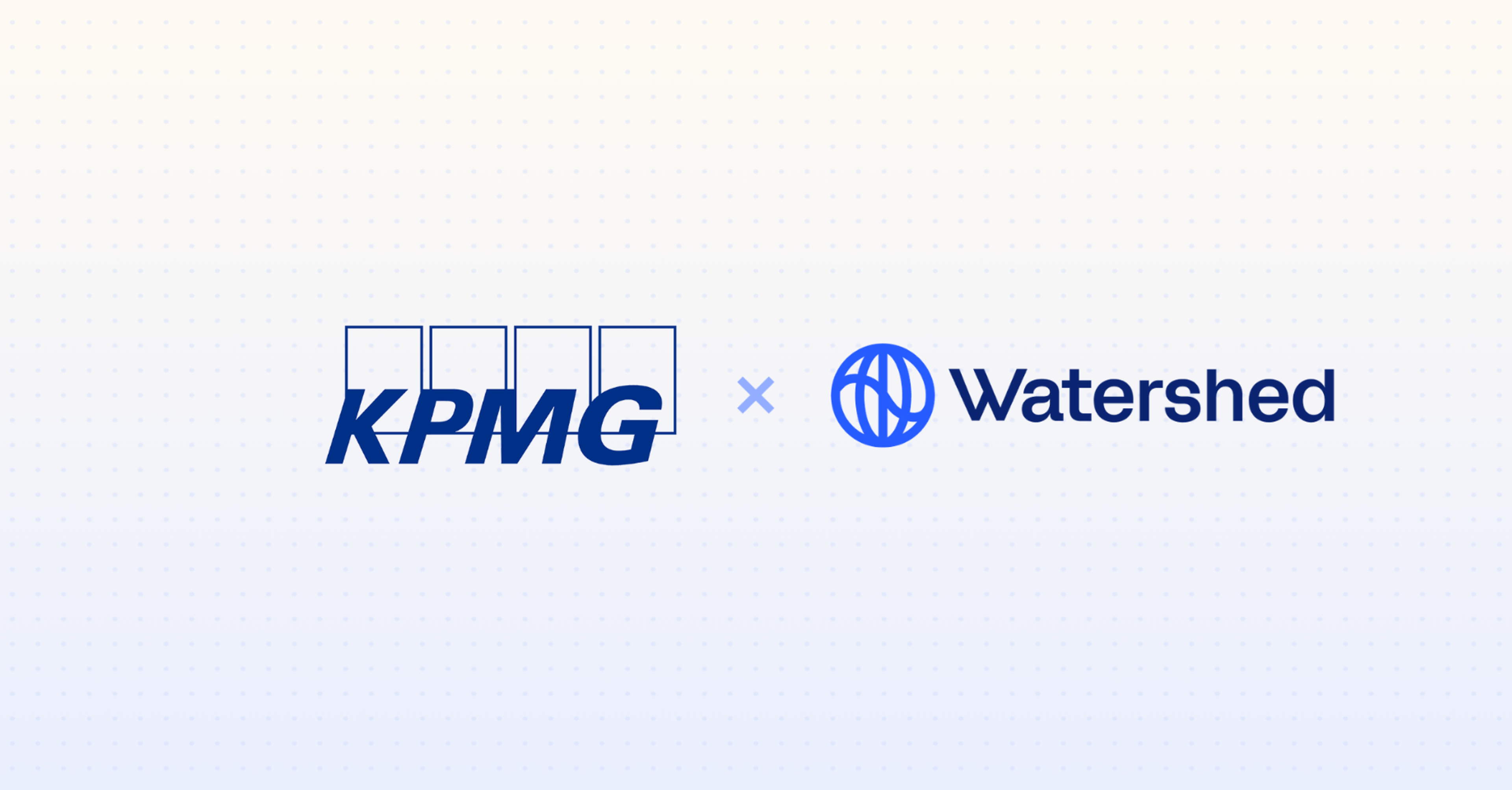Companies everywhere are taking a new approach to managing their carbon footprint—focused on deep reductions in emissions rather than cheap offsets. This approach is critical if we’re to stave off the worst of climate change.
But how much carbon reduction is enough? And how can we know if a company is working on a real plan, rather than an empty press release?
What is the Science Based Targets Initiative?
The Science Based Targets initiative (SBTi) is fast becoming the gold standard to answer this question. They set guidelines for carbon reduction targets (how much is enough?) and validate targets submitted by companies. Their requirements have real teeth: companies must consider all emissions, and reduce them deeply. Nearly 1,000 companies—with more than 1 billion tonnes of CO2e emissions, or 2% of the world’s total—have set their own Science Based Targets (or SBTs).
SBTi is ambitious and rigorous, but it’s also complicated. In this guide we share the 101 on SBTi: what counts as an SBT, and how to create one. At Watershed, we help companies navigate this process; get in touch if you’d like to go deeper.
The SBTi philosophy
How much carbon reduction is enough?
As the name implies, SBTi roots their answer in science. Scientists at the IPCC and IEA track our global carbon budget: the maximum amount the world can emit before global temperatures rise beyond 1.5º - 2º C (the threshold set by the Paris Agreement). SBTi works backwards from that global carbon budget to determine how much each industry and business needs to reduce to do their part.
Think of it this way: if every organization had an SBT and hit it, we’d avoid the worst of climate change.
This philosophy is an important corrective to traditional corporate greenwashing. SBTi is about real reductions and the nitty gritty of how to get them done. Companies with SBTs are future-proofing against coming regulation and letting stakeholders know their climate commitment is genuine.
Working backward to go forward

What counts as a Science Based Target?
At its core, the SBTi framework is a rigorous set of criteria about what emissions reductions count as a science-based target. These guidelines are detailed and complicated, and vary by industry—but they’re all rooted in a few key ideas.
Start with a temperature target. The landmark Paris Agreement, signed by nearly 200 countries in 2016, commits the world to keep the rise in global temperatures “well below” 2°C. Since then, the UN IPCC has urged a ceiling of 1.5º C. Think of this as the red line for global climate change. When a company sets an SBT, it starts by picking a temperature target, and then works backwards to the emissions reductions consistent with that goal.
Start reducing now. Reduction targets must be achieved in the next 5-15 years. SBTi doesn’t give credit for long-term goals that will be too late for solving climate change, and that can be kicked down the road for the next CEO to implement. SBTs must count down from your most recent emissions inventory—meaning no credit for prior reductions. (If COVID skewed your recent emissions, you can use 2019 as your base year, or a multi-year average.)
Reductions only, no offsets. SBTi only gives credit for true reductions in your carbon footprint, not carbon offsets or avoided emissions.
Count everything. Science-based targets look broadly at all of a company’s carbon emissions, building on the GHG Protocol’s framework for different “scopes” of emissions. SBTs must incorporate 95% of Scope 1 and 2 emissions, and all Scope 3 emissions if they equal 40% or more of the whole. (While companies with < 40% aren’t required to have Scope 3 SBTs at this time, those emissions still need to be measured, reported, and managed!)
The Greenhouse Gas Protocol
The Greenhouse Gas Protocol—i.e., the equivalent of GAAP for carbon accounting— divides emissions into three “scopes”.
- Scope 1 - Greenhouse gases directly emitted by facilities you own (e.g., burning gas to power your car or office)
- Scope 2 - Emissions from electricity you purchase
- Scope 3 - Everything else: carbon emitted upstream (by your suppliers) and downstream (by your customers)
SBTi Reduction Targets
SBTi sets different reduction requirements for different scopes of emissions.
- Scope 1 and 2. These are the emissions that a company controls. Companies must set targets for Scopes 1 and 2 that result in a steep reduction in absolute emissions. For Scope 2 (emissions from electricity), you can set a target for procuring a certain portion of your electricity from renewable sources.
- Scope 3. This is where it gets tricky. Companies have three choices for reductions here:
- Absolute reductions: cutting total Scope 3 emissions each year (i.e., at least 4.2% fewer total emissions per year linearly for a 1.5°C SBT).
- Intensity targets: a reduction in emission per unit of business activity, which can be measured relative to specific units like items manufactured or total dollars earned. These options are popular for fast-growing companies who expect their emissions to grow in absolute terms, but who want to get greener as they scale.
- Supplier engagement: a target for how many of a company’s vendors set their own SBTs. This is the magic of the SBT framework, enabling ambitious targets to cascade down supply chains.
These options can be mixed-and-matched, as long as they collectively cover two-thirds of Scope 3 emissions. So a company can set absolute reductions for some carbon expenses like business travel, while using intensity or vendor-based targeting for core goods and services.
Net zero
Traditionally, science-based targets focused on emissions reductions; net zero targets go a step further to remove whatever carbon remains.
SBTi recently announced their guidance for net zero. The four key requirements:
- Set a short-term science-based target for reducing emissions in the next 5-10 years
- Set a long-term science-based target for reducing emissions in the long term
- Permanently remove whatever carbon remains in your target year
- Fund projects in the meantime that accelerate decarbonization (like carbon removal and forest preservation)
This is broadly consistent with our view that true net zero targets require a company to first commit to SBT-style reductions, and then layer permanent carbon removal to get the rest of the way to zero.
How to set Science Based Targets?
SBTi sets out a clear process for setting an SBT. (Companies with fewer than 500 employees are allowed to enter a streamlined program that skips steps 1 and 2. And those in industries like manufacturing and power generation have sector-based approaches that are outside our scope here.)
Step #1: Commit
Submit your official commitment to SBTi.
Your letter of intent must reflect one of two commitments: either reducing your emissions consistent with a 2°C global target, or the more ambitious 1.5°C. Though SBTi is phasing out the 2ºC option, since it’s increasingly clear that we need to stay below 1.5°C to avoid the worst of climate change.
While filing based on either target will get your company listed as “committed” by both SBTi and the We Mean Business coalition, those with a 1.5°C goal will also get highlighted as part of the UN’s Race to Zero campaign for extra recognition.
Step #2: Develop
Once your letter of intent is acknowledged by SBTi, a 24-month countdown begins for you to put together a detailed plan on how much you’ll reduce emissions, by when. This is the key work: SBTi validates plans, with detail on how to get there, not empty pledges.
Step #3: Submit
Once you submit your target, the SBTi team will validate them to ensure they meet the SBTi criteria.
Validation typically takes 30 days, and may involve a “revise and resubmit” request before a final answer is reached—most commonly because the submitter failed to account for all their Scope 3 emissions in their initial inventory. (Remember: even if your org isn’t required to have an SBT there, you still have to report them so that SBTi can approve your exemption.)
Step #4: Communicate
Once your target(s) have been officially validated, let your stakeholders know that it’s game on, then get deep into the work of actual reductions—like rethinking travel, decarbonizing your electricity bill, optimizing your IT footprint, and greening your cloud usage.
Also though: take a moment to celebrate and commemorate your official announcement with your team. You’ve taken a very important step!
Step #5: Disclose
With your official SBT and ongoing measurements in hand, the final step is to share it all publicly—both to promote transparency and to meet increasing disclosure requirements.
Of the various acronyms in the climate disclosure space, we recommend the TCFD framework, particularly as interpreted and managed by CDP. For a demystification of all this, see our guide to what companies need to know about TCFD. If you file with CDP each year, you’ll fulfill both your TCFD and SBTi obligations, and will have well-formatted disclosures to share elsewhere.
SBTs otherwise just need to be revisited at least every five years, or whenever there’s a material change that would put compliance at risk.
Nearly 1,000 companies have now committed to 1.5°C SBTs. If we can help you join them, please get in touch.












